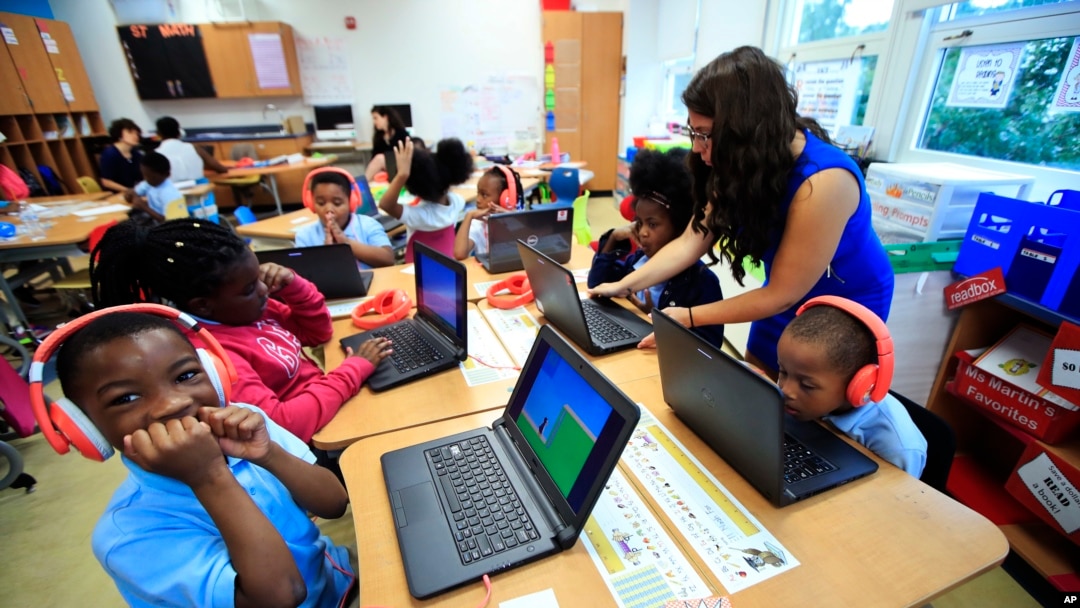In the heart of a small village in rural Kenya, a young woman named Amina logs onto a smartphone for the first time. She’s part of a community initiative funded by a local non-profit that teaches digital literacy to women and girls. With shaky fingers, she opens a mobile banking app, sends a small amount of money to her sister in the next town over, and then watches a video tutorial on how to create a simple business website. For Amina, this moment isn’t just about learning a new skill—it’s the first step toward independence, self-reliance, and a voice in a world that has long silenced women like her.
Stories like Amina’s are unfolding across continents, from urban tech hubs in India to remote villages in Latin America. Women are no longer just consumers of digital technology—they are creators, innovators, leaders, and change agents. Their role in digital empowerment is not a sidebar in the broader narrative of technological progress; it is central to it. And while significant barriers remain, the momentum is undeniable. Women are breaking through outdated norms, rewriting the rules of access, and shaping a digital future that is more inclusive, equitable, and human.
The Digital Divide: A Gendered Reality
Despite the rapid expansion of the internet and mobile technology, the digital divide remains deeply gendered. According to the International Telecommunication Union (ITU), globally, about 67% of men use the internet compared to just 61% of women. In least developed countries, this gap widens significantly—women are 33% less likely than men to use mobile internet.
This disparity isn’t just about access to devices or connectivity. It’s rooted in social norms, economic constraints, and systemic inequalities. In many parts of the world, girls are less likely to be encouraged to pursue education in science, technology, engineering, and mathematics (STEM). Cultural biases often portray technology as a male domain, discouraging girls from seeing themselves as future engineers or developers.

Even when women enter the tech workforce, they face an uphill battle. A 2023 report by UN Women highlighted that women make up only 28% of the workforce in STEM fields globally. In leadership roles within the tech industry, the numbers are even more stark—women hold just 22% of AI-related positions and 26% of executive roles in major tech firms.
But numbers alone don’t capture the full picture. Behind each data point is a story of resilience, ingenuity, and quiet revolution.
Women as Innovators: Redefining What’s Possible
Digital empowerment isn’t just about access—it’s about agency. It’s about who gets to design the tools we use, who shapes the algorithms that influence our lives, and who decides what problems are worth solving.
Take Dr. Fei-Fei Li, a pioneer in artificial intelligence and co-director of Stanford’s Human-Centered AI Institute. Her work in computer vision has helped lay the foundation for technologies we now take for granted, from facial recognition to image search. But beyond her technical contributions, Dr. Li has been a vocal advocate for diversity in AI, co-founding AI4ALL, an organization that introduces underrepresented high school students to AI through immersive educational programs.
Or consider Susan Wojcicki, former CEO of YouTube, who launched the “Women in Tech” initiative to support female entrepreneurs and creators. Under her leadership, YouTube invested in programs that amplified women-led content, from educational channels to digital businesses run by women in emerging markets.
These women are not anomalies—they are part of a growing wave of female innovators who are using technology to address real-world challenges. In Nigeria, Bosede Afolabi founded MamaCare, a mobile health platform that provides prenatal and postnatal information to expectant mothers via SMS and voice messages. In Bangladesh, Salma Sultana created Digital Green, a platform that trains rural women farmers in sustainable agriculture using video-based learning.
What unites these innovators is a shared understanding: technology should serve people, not the other way around. And when women are at the table, the solutions tend to be more holistic, inclusive, and grounded in lived experience.
Grassroots Movements: Building Power from the Ground Up
While high-profile leaders capture headlines, much of the real transformation is happening at the community level. Across Africa, Asia, and Latin America, women are organizing, teaching, and mentoring each other in digital skills.
In India, the Digital Sisters program trains women in rural areas to become “digital champions” in their villages. These women learn how to use smartphones, access government services online, and even start small e-commerce businesses. Once trained, they return to their communities to teach others, creating a ripple effect of empowerment.
Similarly, in Colombia, the organization Colombia Dev runs coding bootcamps specifically for women from low-income backgrounds. Graduates have gone on to work at tech startups, launch their own apps, and even mentor the next cohort. One participant, Maria Fernanda, developed a mobile app that connects domestic workers with job opportunities while ensuring fair wages and safe working conditions.
These grassroots efforts are powerful because they are rooted in trust, cultural understanding, and mutual support. They don’t rely on top-down solutions or corporate philanthropy—they emerge from the lived realities of women who know exactly what their communities need.

What’s more, these initiatives often challenge traditional gender roles in subtle but profound ways. When a woman learns to code, she isn’t just acquiring a skill—she’s redefining what’s possible for herself and for those around her. She becomes a role model, a provider, a decision-maker. In many cases, she gains financial independence, which directly correlates with greater autonomy in household and community decisions.
The Economic Case for Women’s Digital Inclusion
The business case for empowering women digitally is compelling. According to a McKinsey Global Institute report, closing the gender gap in digital access could add $700 billion to the GDP of emerging economies by 2025.
Why? Because when women have access to digital tools, they start businesses, create jobs, and drive innovation. A study by the World Bank found that women-owned businesses that use digital platforms grow twice as fast as those that don’t. In sub-Saharan Africa, women who sell goods online report income increases of up to 50%.
But the impact goes beyond individual success. When women participate in the digital economy, entire communities benefit. Children are more likely to be educated, families are more likely to be financially stable, and local economies become more resilient.
Consider the case of e-commerce in Southeast Asia. Platforms like Shopee and Lazada have enabled thousands of women to launch online stores selling everything from handmade crafts to organic skincare. In Indonesia, a 2022 survey by Google, Temasek, and Bain & Company found that 45% of online sellers are women, many of whom run their businesses from home while managing childcare and other household responsibilities.
Digital tools have given these women flexibility, reach, and a level of control over their work that traditional employment often denies them. For many, it’s not just a side hustle—it’s a pathway out of poverty.
Overcoming Systemic Barriers: Safety, Bias, and Representation
Despite progress, significant obstacles remain. One of the most pressing is online safety. Women, especially those in public or professional roles, are disproportionately targeted by online harassment, doxxing, and cyberstalking. A 2021 study by the United Nations Broadband Commission found that 73% of women have experienced or witnessed online violence.
This isn’t just a personal issue—it’s a barrier to participation. When women fear for their safety online, they self-censor, withdraw from public discourse, or avoid digital platforms altogether. This silencing effect undermines the very promise of digital empowerment.
Then there’s the issue of algorithmic bias. AI systems trained on biased data can perpetuate and even amplify gender stereotypes. For example, voice assistants like Siri and Alexa were initially programmed with default female voices and submissive personalities, reinforcing outdated notions of women as helpers or assistants. Similarly, hiring algorithms have been found to downgrade resumes that include words like “women’s chess club” or “female engineer.”
Representation in tech teams matters because it shapes the products we use. When development teams lack gender diversity, they’re more likely to overlook the needs of half the population. Period-tracking apps that fail to account for irregular cycles, fitness trackers that don’t accurately measure women’s heart rates, or facial recognition systems that misidentify darker-skinned women—these aren’t just bugs. They’re symptoms of a deeper imbalance.
The Role of Policy and Institutional Support
Change at scale requires more than individual effort—it demands systemic support. Governments, corporations, and educational institutions all have a role to play in advancing women’s digital empowerment.
On the policy front, countries like Rwanda and Estonia have made digital inclusion a national priority. Rwanda, for instance, has implemented gender-responsive ICT policies that include targeted funding for women-led tech startups and mandatory digital literacy training in schools. As a result, Rwanda now has one of the highest rates of female participation in the tech sector in Africa.
In the private sector, companies are beginning to recognize that diversity isn’t just a moral imperative—it’s a business advantage. Microsoft’s “Women in Technology” scholarship program, Google’s “Diversity Equity and Inclusion” initiatives, and Salesforce’s commitment to equal pay are steps in the right direction. But more needs to be done to ensure that these programs translate into real, sustained change.
Education is another critical lever. Integrating digital literacy and coding into school curricula from an early age can help normalize technology as a field for everyone. Organizations like Girls Who Code and Black Girls Code are doing this work, but they need broader institutional backing to reach more girls.
Universities and vocational training centers can also play a role by offering scholarships, mentorship programs, and networking opportunities specifically for women in tech. In Kenya, the iHub in Nairobi has created a women-in-tech incubator that provides seed funding, workspace, and business development support to female entrepreneurs.
The Power of Mentorship and Community
Behind every successful woman in tech, there’s often a network of support. Mentorship—whether formal or informal—can be transformative. A mentor can offer guidance, open doors, and help navigate the unwritten rules of a male-dominated industry.
Take the example of Reshma Saujani, founder of Girls Who Code. She didn’t grow up coding; she was a lawyer and political organizer. But when she ran for Congress in 2010 and lost, she noticed something troubling: in school visits, boys dominated computer science classes while girls sat on the sidelines. That observation sparked a mission. Today, Girls Who Code has reached over 500,000 girls in the U.S., many of whom credit their mentors with giving them the confidence to pursue tech careers.
Peer networks are equally important. Communities like Women Who Code, Tech Ladies, and the AnitaB.org network provide safe spaces for women to share experiences, seek advice, and collaborate on projects. These communities aren’t just social—they’re professional lifelines.
For women in remote or underserved areas, online communities can be especially powerful. Platforms like LinkedIn, Slack groups, and even WhatsApp networks allow women to connect across borders, share job opportunities, and organize collective action.

The Intersection of Gender, Race, and Class
It’s important to recognize that women’s experiences in the digital world are not monolithic. A Black woman in Atlanta faces different challenges than a white woman in Stockholm or a rural woman in Pakistan. Intersectionality—the idea that systems of oppression like racism, sexism, and classism overlap—must be central to any discussion of digital empowerment.
For example, a 2022 study by the Pew Research Center found that Black and Hispanic women in the U.S. are less likely than white women to have home broadband or own a smartphone. They’re also more likely to rely on mobile-only internet access, which can limit their ability to engage in online learning or remote work.
Similarly, LGBTQ+ women, women with disabilities, and indigenous women often face compounded barriers. A transgender woman in Brazil may hesitate to use digital banking due to fear of misgendering or fraud. A disabled woman in India may struggle to access online content that isn’t designed with accessibility in mind.
True digital inclusion means designing systems that account for these intersecting identities. It means investing in accessible design, multilingual platforms, and culturally relevant content. It means ensuring that no one is left behind—not because they lack ability, but because the system wasn’t built for them.
Looking Ahead: A More Inclusive Digital Future
The journey toward gender equality in the digital world is far from over, but the direction is clear. Women are not waiting for permission—they are building, coding, teaching, and leading. They are redefining what it means to be a technologist, an entrepreneur, a changemaker.
As we move forward, the focus must shift from simply “including” women to transforming the systems that have excluded them. This means:
- Investing in infrastructure that brings affordable, reliable internet to underserved areas.
- Reforming education systems to encourage girls to explore STEM from an early age.
- Holding tech companies accountable for inclusive hiring, equitable pay, and safe online environments.
- Supporting women-led startups with funding, mentorship, and market access.
- Amplifying women’s voices in policy discussions about the future of technology.
The digital age doesn’t have to repeat the inequalities of the past. It can be a space of renewal, of justice, of shared power. But that won’t happen by accident. It will happen because people—especially women—refuse to accept the status quo.
Amina, the young woman in Kenya, didn’t set out to change the world. She just wanted to send money to her sister and learn how to build a website. But in doing so, she took a stand. She claimed her place in the digital world. And in that moment, she became part of a global movement—one that is rewriting the rules, one click at a time.
Final Thoughts: Empowerment as a Collective Journey
Digital empowerment is not a destination. It’s a journey—one that requires courage, collaboration, and constant reflection. For women, that journey is often harder, but also more meaningful. Every time a woman logs on, speaks up, or builds something new, she expands the boundaries of what’s possible.
The future of technology doesn’t belong to any one group. It belongs to all of us. And when women are empowered to participate fully, that future becomes not just more innovative, but more humane.
For entrepreneurs, the lesson is clear: build products that serve everyone, not just the privileged few. For freelancers and remote workers, the message is this: your voice matters—use it. For investors, the opportunity is undeniable: back women-led ventures, and you’re not just doing good—you’re doing smart. For jobseekers, especially women and non-binary individuals, know this: your perspective is needed, your skills are valuable, and there is space for you.
The digital world is being shaped right now—in boardrooms, in classrooms, in village centers, and on laptops in coffee shops. Who shapes it matters. And increasingly, women are making sure they’re at the table.
This isn’t just about fairness. It’s about building a digital world that works for everyone. And that, ultimately, is the true measure of progress.







:max_bytes(150000):strip_icc()/GettyImages-872163938-5b35303a46e0fb0037eef112.jpg?w=768&resize=768,0&ssl=1)